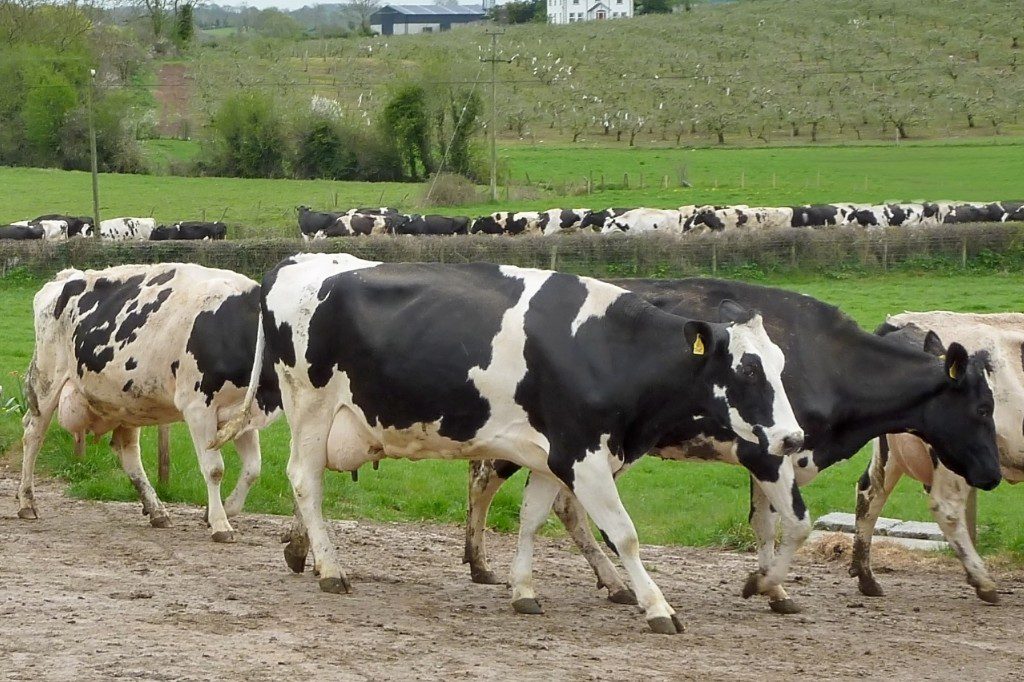For a number of reasons, once-a-day (OAD) milking is becoming an attractive option for Irish dairy farmers.
Teagasc’s Brian Hilliard spoke of the growing interest in OAD milking at last week’s Moorepark ’17 open day.
“It’s not an entirely new concept. Many farmers used OAD milking when quotas were in place here,” Hilliard stated, adding that it’s “widely practiced in New Zealand”.
“If you’re doing a bad job twice a day, then don’t go near OAD,” was the first thing Hilliard said.
“The switch to full season OAD milking requires two-to-three years of careful planning.” the Teagasc advisor said.
He recommended a two-month trial period. “Consider milking your cows for two months on OAD before changing over to OAD full-time. This will identify cows unsuitable for OAD that should be culled or replaced,” Hilliard said.
The switch to OAD will obviously impact on milk volume and milk solids (MS) yield. However, Hilliard mentioned carrying 5-10% more cows can compensate for the drop in initial milk production.
Teagasc says that the biggest yield hit occurs in the first year of OAD. This is a 26% reduction in volume per cow and a 20% reduction in MS yield per cow.
On the other hand, fat increased by 10.3% and protein jumped by 7.3% when compared to twice-a-day milking.
Over five-to-six years on OAD, yields should stabilise at about 6-10% lower than twice-a-day milking, Hilliard stated.
Transitioning to OAD
Before deciding to make the switch, the Teagasc advisor said, it is essential to assess the potential benefits against the reduction in milk production.
A successful OAD system requires cows that suit the system. Poor-performing, high SCC cows with bad udders need to be culled from the herd, Hilliard advised, and first lactation cows should be kept to a minimum.
Holstein Friesian-Jersey crossbred cows are said to adapt better to OAD, as they have a lower volume and a higher fat and protein composition. However, Hilliard mentioned a farmer with a Holstein Friesian herd achieving 417kg MS/cow.
Hilliard also reports profits “just as good and better” for some better OAD operators than many milking twice a day.
While there will be a drop in yield transitioning to OAD, Hilliard highlighted a number of factors that will compensate for this.
There will be a reduction in herd health costs with reduced incidence of low body condition score, lameness and infertility and Hilliard added: “Lameness is practically eliminated.”
Furthermore, better conception rates, a more compact calving, better herd longevity and a lower replacement rate will all be financially beneficial.
- Shortage of skilled labour;
- Better lifestyle and labour saving;
- Facilitates expansion – second milking unit;
- Off-farm job;
- Higher milk price;
- Cows having to walk long distances;
- Cows having to cross busy roads;
- Milking is made a more attractive option for the successor;
- More feasible to stay milking rather than retire.
